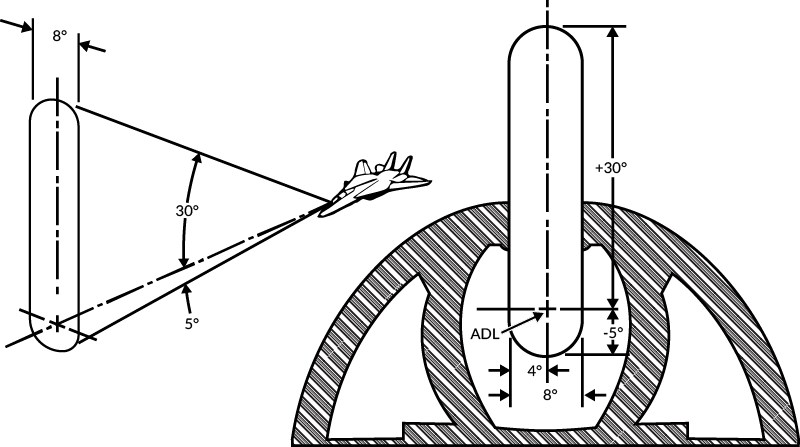-
Posts
519 -
Joined
-
Last visited
Content Type
Profiles
Forums
Events
Everything posted by r4y30n
-

CADC / Wing Sweep failure in Instant Action Case I (Supercarrier)
r4y30n replied to Uxi's topic in DCS: F-14A & B
I had the same issue in that mission and found that hitting the master reset as soon as I started cleared it up. -

Mid Compressor Bypass Breaker - Where is it?
r4y30n replied to Southernbear's topic in DCS: F-14A & B
It may help to understand when exactly the MCB opens to determine any benefit to disabling it, the HB manual is currently a little vague on the topic. If you fire the gun or launch a missile the valve will be open a minimum of 5 seconds. Whenever you're above 16 units AoA the valve is open (less if you're above Mach 0.5) and will remain so for another 3 seconds after you ease off. The real kicker may be when attempting aerial refueling, the valve stays open while the probe is extended. And with gear down, the valve opens when going to Zone 5 but also when dropping below Mil. The 2004 NATOPS says with the MCB open you lose 3000 lbs thrust per engine in a Zone 5 takeoff but, because you're dumping a percentage of the total airflow, the actual loss of thrust will vary with speed, altitude and throttle... -

Patch Nov 18th - F-14A release - Feedback Thread
r4y30n replied to IronMike's topic in DCS: F-14A & B
I've heard arguments both ways in comparing fuel flow of the TF30 to the F110. In RADM Gilchrist's book "Tomcat! The Grumman F-14 Story" he mentions that he was shocked how low the fuel flow was on his first cross country trip in an A. Later, when discussing the B, he said fleet reports were that the B saved a lot of fuel when launching by staying out of burner but fuel flow was a little higher than the TF30 in cruise so over the course of a mission there wasn't really much improvement. Other sources claim significantly better mileage out of the F110, so who knows... I can say that the lower SFC of the F110 is likely correct and also misleading since the engine makes so much more thrust. -
In one of the other videos from that interview Snodgrass mentions coming back with jammed flaps and multiple over Gs. He may have won engagements by using prohibited techniques but he also broke a lot of planes in the process. And the idea of it being a 13g plane is ridiculous. Mike Ciminera, one of the Grumman engineers on the F-14 team, said in “The Aircraft Designers, a Grumman Historical Perspective” that they were concerned about the strength of the wing box but structural analysis concluded that the engine mounts would fail first at 13g and the wing box would survive to some unstated, higher value. This was an analysis done on paper (and computer) before any planes had actually flown. Even if that analysis was spot on it doesn’t make the F-14 a 13g plane, it means the engines fall out of the nacelles at that point, not to mention losing the INS before you get that far.
-

AIM-54 Changes / new API fixes are live in today's patch
r4y30n replied to IronMike's topic in DCS: F-14A & B
So, basically, the Phoenix guides on the data link in all modes except ACM up until the point of terminal guidance, at which point the TWS missile goes active and the STT missile goes semi-active? If it goes semi-active at the same 16 seconds TTI then the range to target at that point would be about where you’d want to launch a Sparrow, so that would make sense. -

AIM-54 Changes / new API fixes are live in today's patch
r4y30n replied to IronMike's topic in DCS: F-14A & B
Watch out when True Grit's Typhoon arrives, it uses millimeter-wave radar to pick up missiles. -
I was not expecting to see Okie’s name on the canopy rail!
-
The attached image is the flood area from the manual, similar to VSL LO but doesn't cover as much elevation. Probably best used at close range from a rear aspect. Also good for when you have Sparrows but your radar is out of commission, since the flood antenna is separate from the AWG-9 dish.
-
Yup, PLM doesn't move the radar at all, it stays fixed on the ADL. The Double-D pattern of SEAM is in the F-8 Crusader NATOPS from 1967 and seems to be a feature of Vietnam-era sidewinders.
-
There’s no trim tab. Stabilators don’t generate stick forces on their own so all the trim system does is move the centering cams in the stick itself. Also, the trim range is pretty huge, over 20° according to the NATOPS.
-
Well the F-5E has an official MiG-28 skin so anything’s possible.
-
It really depends on who you're up against. When the A was new it could go into the vertical against most perceived threats. The linked video is an F-4 vs an F-14A at Miramar in the '70s.
-
I thought the weather effects on vapor were part of an upcoming core update. Also, I vaguely recall one of the devs mentioning a long, long time ago that the current vapor system can't handle variable sweep wings.
-

AIM-54 Changes / new API fixes are live in today's patch
r4y30n replied to IronMike's topic in DCS: F-14A & B
Well if it's active off the rail it's also not lofting so there's no sense in trying to go for a long shot that way. I think it was Okie who said it was pretty badass around 10 nm in ACM mode. -
It's pretty crazy how close the Ps = 0 curves are, looks like the real difference between the two is how quickly the B can regain energy vs the A.
-

When would you use the emergency disconnect paddle on the stick?
r4y30n replied to titanium's topic in DCS: F-14A & B
Well, you need all three channels on for the AP to work, so it would make sense that an emergency disconnect kills all of them. I just assumed there was a nonzero chance the AP goes nuts and starts an uncommanded dive or climb so they put a handy switch in to quickly regain control. -
Well we know the patch is coming on the 4th of November... Patch Status - ED Forums
-
That's pretty harsh... The pilot radar modes work and so do the sidewinders and gun. Just fly it like an F-5 with giant wings and engines.
-
You could also turn on the APC (Approach Power Compensator) as you fly the pattern to get an idea of how much power is required. There is some lag as it tries to get you on the right AoA but so long as you're smooth on the stick it's not that big a deal.
-
The super hornets have both leading and trailing edge flaps that can deflect upward. Not as much as the down range but more than 0.
-
Jester won’t lock targets within visual range by design. Once you get that close it’s the pilot’s job to lock the bandit with PLM, PAL or VSL while the RIO mans the countermeasures and keeps tabs on the bandit visually.
-
I'm not sure how this is relevant to the discussion.
-
But aren't they triggered by AOA? Or does the plane react quicker if you have them deployed before you pull rather than deploying as you pull? I've never bothered with them in combat, either... I trust Grumman when they, say "The schedule commands full maneuver flaps and slats as soon as the slatted wing maneuvering efficiency exceeds that of the clean wing."
-

The RIO it's the HERO - Give them credit for their kills!
r4y30n replied to Chimango's topic in DCS Core Wish List
Yup, it’s a team effort. +1 -
Jester does have bindings for specific commands. Not sure if scan altitude is one of them but things like break lock are there.



